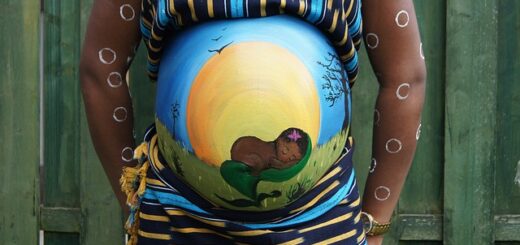To a Pair of Sarus Cranes – Summary and Notes

The Summary of the poem
ಕನ್ನಡ ಅನುವಾದ / Summary in Kannada
The male was shot
as he necked
to pull the reluctant sun out
from the rim of horizon.
“To a Pair of Sarus Cranes” is a sad poem that tells the tragic story of a male Sarus Crane who is shot while attempting to greet the rising sun in the morning. The male crane’s noble gesture is met with a brutal end as he is killed, leaving his partner to witness the horrifying scene.
She flew crying
as he was picked up hands and jaws
and a proud neck was humbled
to lie like dirty linen
in a coarse washing bag.
As hunters pick up the dead crane in their hand, his proud neck, a symbol of grace and beauty, is reduced to hanging “like dirty piece cloth” in a bag, a stark contrast to his former majesty.
She circled the sky
in movements of grace
over his disgraceful end.
The killers went away and she returned
to the death’s scene
The female crane, filled with sorrow and despair, cries out and circles the sky in graceful movements, mourning the disgraceful death of her partner. The hunters of the crime leave, but she returns to the site of death.
with grief that inscribed its intensity
in dots and pits
like the Morse code of bird’s sorrow
transmitted to the air.
The sound of her cries and the silence in between punched the air with her grief “like the Morse code of bird’s sorrow.” Marking her grief with symbolic actions, the poem captures the intensity of the bird’s sorrow, likening it to Morse code transmitted to the air, emphasizing the profound and emotional impact of the loss.
With her beak she kissed a few feathers
picked the ones that wind had not taken away
and sat to hatch
the blood stained feathers
into a toddling chick.
She used her beak to kiss a few remaining feathers which are not yet blown away by the wind.
In a defiant act of love, the crane gathers her mate’s feathers, even the blood-stained ones, and sits to hatch them. This act is symbolic, a refusal to let his death be the end. She hopes to hatch life from the remnants of tragedy, to carry his memory forward.
The female crane’s actions convey a deep connection to her mate, as she endeavors to preserve his memory through the hatching of their offspring.
A wave of the seas she had never seen
came to her from far away
and carried her to him.
She went away beyond Hume’s words,
beyond the legends and fables of human love.
The poem suggests her love goes beyond human understanding. Her grief is “a wave of the seas she had never seen,” a depth of emotion beyond words. She goes “beyond Hume’s words, beyond the legends and fables of human love,” suggesting her connection with her mate challenges the human definition of love.
As she sits on the blood-stained feathers, a metaphorical wave from an unknown sea reaches her, carrying her spirit to her deceased mate. The poem concludes by suggesting that the female crane rises above human expressions of love, going beyond the words of Hume, as well as the legends and fables (stories) associated with human emotions.
In summary, the poem explores themes of love, loss, and grief through the lens of nature, using the story of the Sarus Cranes to evoke a powerful emotional response and reflect on the universal aspects of life and death.
David Hume’s words paint a poignant picture of the deep bond and profound grief experienced by Sarus Cranes in the wake of losing their mate. His observations, captured in “The Game Birds of India, Burma and Ceylon” (1881), highlight the remarkable devotion and sensitivity exhibited by these magnificent creatures.
Here’s what we can glean from Hume’s words:
- Lifelong Partnerships: Sarus Cranes are known to form monogamous pairs, staying bonded for their entire lives. This deep connection fosters an intimacy and understanding that transcends mere companionship.
- Overwhelming Grief: When a mate is lost, the surviving crane experiences immense grief. Hume’s mention of them “pining away” and even dying demonstrates the profound emotional impact of such a loss.
- Lingering Devotion: The widowed crane often remains “about the locality where their partner was killed,” their calls echoing a desperate search and a refusal to let go. This behavior speaks volumes about the enduring love and loyalty that characterizes their bond.
While Hume’s observations date back to the 19th century, they continue to resonate with modern scientific understanding of avian intelligence and emotions. Studies have shown that crows, parrots, and other birds exhibit complex social behaviors and experience grief in ways similar to humans.
The story of the Sarus Cranes serves as a powerful reminder of the depth of love and connection that exists not only within our own species but also in the animal kingdom. Their unwavering devotion and profound grief offer a glimpse into the emotional richness and complexity of the natural world.
It’s important to remember that while the concept of “grief” may differ across species, it’s crucial to respect and acknowledge the emotional capacity of all living beings. By appreciating the deep bonds and sensitivities exhibited by creatures like the Sarus Cranes, we can foster a more empathetic and compassionate relationship with the natural world around us.
Morse code is a signaling system that transmits messages using a series of dots and dashes, representing letters, numerals, punctuation, and special characters. It was invented in the 1830s by Samuel Morse and Alfred Vail, and played a crucial role in early telecommunication, even being used during World Wars I and II.

Here’s how it works:
- Dots: Short signals, typically lasting one unit of time.
- Dashes: Longer signals, typically lasting three units of time.
- paces: Short pauses between elements within a character (dot, dash).
- Longer spaces: Longer pauses between characters and words.
- Frequency: Traditionally transmitted via electrical pulses through wires or radio waves, but can also be conveyed visually with light flashes or mechanically with flag semaphore.
- By combining these basic elements, different letters, numbers, and symbols can be represented:
- For example, the letter “E” is represented by a single dot (“·”).
- The letter “T” is represented by a dash followed by three dots (“- · · ·”).
- The number “1” is represented by a dot and a dash (“·-“).
Morse code played a vital role in communication throughout the 19th and 20th centuries, facilitating communication across vast distances. While largely replaced by digital technologies for everyday communication, it remains an important skill for some professions like amateur radio enthusiasts and maritime communication. It’s also used for accessibility purposes, as its simple code can be easily learned and used by people with visual impairments.
Learning Morse code can be a fun and rewarding challenge, offering a glimpse into the history of communication and a unique way to send and receive messages. With its rhythmic nature and symbolic representation, Morse code continues to intrigue and inspire even in the digital age.
Exercise
II. COMPREHENSION QUESTIONS :
A. Answer briefly the following questions
- The time of the day suggested in the poem is
a. sunrise b. sunset c. either sunrise or sunset d. not clear
Ans:a. sunrise
- The sun is described as the reluctant sun. It means that,
a. the sun was unwilling to rise.
b. the male bird was impatient.
c. it was the bird’s feeling that the sun was reluctant to rise.
d. the sun always takes more time to rise than to see
Ans: the sun was unwilling to rise.
3.a. In the first four lines, there is exaggeration in the description.What is it?
Ans:a)The male bird is shown as bending to pluck the sun out from the rim of the horizon. Certainly, the bird cannot touch the bird cannot touch the sun with its beak or even reach the horizon.The bent neck of the bird and the eager movement of the bird are shown thus.
b. What is the figure of speech used here?
Ans:The figure of speech is Hyperbole.
4.How was the majestic neck humbled by the hunter?
Ans:The neck of a Sarus crane is very long, graceful and beautiful.At a time when the bird was stretching it neck and trying to do something impossible like pulling the sun out of the rim of the horizon, the bird was shot in the neck.When it fell down dead, the hunter without paying any attention to the beauty that was lost through his action, casually picked up the bird hands and jaws, crumpled it like a piece of paper and threw it into his bag without a second look as it.In this manner, the majestic neck has humbled the hunter.
- The expression “picked up hands and jaws,” suggests,
a. callousness of the hunters.
b. heartlessness of the hunters.
c. urgency of the hunters.
d. cruelty of the hunters
Ans: a. callousness of the hunters.
- ———————— is compared to ‘dirty linen’ (complete the
sentence using the correct option)
a. the proud neck of the bird
b. the dead body of the bird
c. the hands and jaws of the bird
d. the material of the bag
Ans: b. the dead body of the bird
- “and sat to hatch/the blood stained feathers/into a toddling
chick”. This suggests,
a. that the female bird was out of her senses after the death of the male bird.
b. the intense love of the female bird towards its male partner.
c. the foolish act of the female bird.
d. the desperate act of the female bird to bring the male bird back to life.
Ans: a. that the female bird was out of her senses after the death of the male bird.
8.How is the end of the female crane suggested in the poem?
Ans: It is said that a wave of the seas she had never seen, came to her and carried her away. It cannot be the real seas because the cranes lived near the sea. It could be a wave of grief which the bird pushed her towards sadness. Grieving for the male bird and sitting on his blood stained feathers, the female bird forgot to eat of a drink and thus becoming very weak met her end.
B. Close Study :
Read the following extract carefully. Discuss in pairs and then write the answers to the questions given below it.
- A wave of the seas she had never seen/came to her from far
away/and carried her to him.
a. What does ‘wave of the seas’ refer to?
Ans:A wave of grief
b.What hadn’t the female bird seen before?
Ans: The female bird hadn’t known grief or sadness before.
c.What figure of speech is used in the extract?
Ans: Personification.
III. PARAGRAPH WRITING :
Discuss in pairs/groups of four each and answer the following questions. Individually, note down the points for each question and then develop the points into one-paragraph answers.
- How is the callousness of the bird-killers brought out in the poem?
Ans: The Poem brings out a contrast between birds and hunter, Male bird is necking, Hunters shoots down a bird and picking it up throws it into a washing bag, Birds are very graceful and beautiful but the hunters treats them carelessly,and Hunters goes away but female bird stays there.
- How does the poet bring out the agony and desperation of the female crane in the poem?
Ans:The crane pair for life having seen its male shot dead by the hunters and being taken away the female Sarus is heartbroken. The bird circles the sky with grace mourning over the disgraceful end of its partner. After the killers had left the place the female bird returned to the death scene and kept flying around whining for its companion with short and long wails resembling the Morse code.With her beak she kissed and bloodstained feathers of her mate which the wind had not yet carried away and sad down to hatch them in the hope she could bring him back to life.
- Pick out any two figures of speech used in the poem and explain how they add to the effectiveness of the poem.
Ans:In first para the hyperbole which is used to highlight a particular point through exaggeration. The male Sarus crane is shown as if it is stretching its neck to pull our the sun from the rim of the horizon . The bird was no match for the cunningness and heartlessness of man.
In second para contain the figure of speech simile to like dirty linen: the proud dignified bird was killed and thrown into the washing bag like dirty linen.This reveals the callousness and lack of aesthetic sense of the hunter.The beautiful graceful bird was just a piece of meat for him














